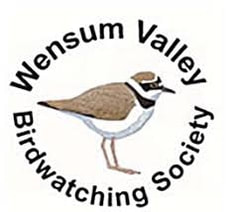|
Speaker: Zoe Smith Reporter: Sue Gale The club was very happy to see Zoe return following her previous talk about Peregrines. Her new job with the Roy Dennis Wildlife Foundation saw her intimately involved with the reintroduction programme of White-tailed Sea Eagles in the Isle of Wight. The focus of the organisation is wildlife conservation and species recovery and Roy Dennis himself has been involved in reintroduction programmes of Osprey, Red Kite, Golden Eagle and Sea Eagle. WT Sea eagles used to be widespread and native in the UK but have been absent as a breeding bird in England for more than 200 years. The last known nest site in Southern England was on the Isle of Wight in 1780. WT Sea eagles are the largest UK bird of prey (and in fact the 4th largest eagle in the world).
The adult has a wingspan of 2.5 metres. The female can weigh up to 7kg; the male more like 5kg. It takes 4 years to moult to the iconic adult plumage. They are generalist predators. Zoe described them as being lazy feeders. They rely heavily on carrion and dietary studies have shown a mix of fish, waterbirds, crustaceans depending on the available prey. They are also kleptoparasites preferring to nick another bird’s prey. Typically, they will nest in coastal sites but can nest inland; typically, on sea cliffs and trees but can be ground nesting. They will raise 1-2 young each year. Reintroduction efforts of the sea eagle date back to 1968 and a failed attempt based in Fair Isle. Learning from this and other efforts the programme became successful and by 2000 100 young had fledged in Scotland. There has also been a successful programme in Ireland with 68 breeding pairs; there are now 130 breeding pairs in Scotland and Scottish Natural Heritage has given permission for the use of these birds as the source for the reintroduction in the IOW. The Netherlands was used as useful background to a reintroduction in a low-lying area: their diet there was chiefly fish and water birds and there was no evidence of conflict with livestock or farmers. The IOW was selected as a good site for reintroduction as geographically there was a good fit with other breeding areas: Ireland, Scotland, the Netherlands and France. It was the last known breeding site in S England and there is a good dispersal route along the coast with good hunting potential in local counties. The reintroduction is a partnership between Forestry England and the Roy Dennis wildlife foundation. Natural England has given a licence for the release of 60 birds over 5 years. The project has been done with local consultation. The first birds were released in 2019. Climbers in Scotland access the young: ideally 10 weeks at collection and they only take from nests with at least 2 young. The chicks are flown to the IOW and put in pens in groups (more male to females as females bigger and bullies). The chicks are fed with no human contact but camera monitored. Just before release they are vet checked and fitted with satellite +/- radio trackers. The tracking data these transmitters yield is astonishing. There are trail maps for each birds showing where they go and at what height and speed. One which flew to Denmark crossed the channel in 40 minutes. As we know some have found their way to Norfolk and this is a hot spot with 7 individuals making their way here. Zoe thought that its attraction might be due to availability of rabbits and hares and large inland water areas. You can report your sighting on roydennis.org “report a sighting” (send a photo). And the organisation can confirm if it was indeed one of their birds. Mortality is associated with collision, lead shot consumption (as secondary poisoning), deliberate poisoning or not quite so deliberate poisoning. One of the recent deaths in Dorset was one of the sea eagles that had visited Norfolk: it had 7 times the lethal level of a poison (brodifacoum)in its liver but there will be no prosecutions as it’s “inconclusive” if the poisoning was deliberate or secondary. There is also concern about Avian flu and wind turbines. BUT it seems that a released pair has formed a territorial bond on the IOW and there is hope that this might develop into a breeding pair. Zoe finished her talk with a mention of the Raptor Research Foundation where she is now Director Outside North America. This charity holds international annual meetings, has a scientific journal and supports research into raptors. Check out its website. We are very grateful to Zoe for her very interesting and stimulating talk. Sadly, I can’t show you the great videos and photographs that she showed of the sea eagles at the release site and also of one fishing in slow motion and then at full speed. Truly amazing!
0 Comments
Leave a Reply. |
Please feel free to read through our reports from our monthly indoor / online meetings. Archives
May 2024
Categories |

 RSS Feed
RSS Feed
